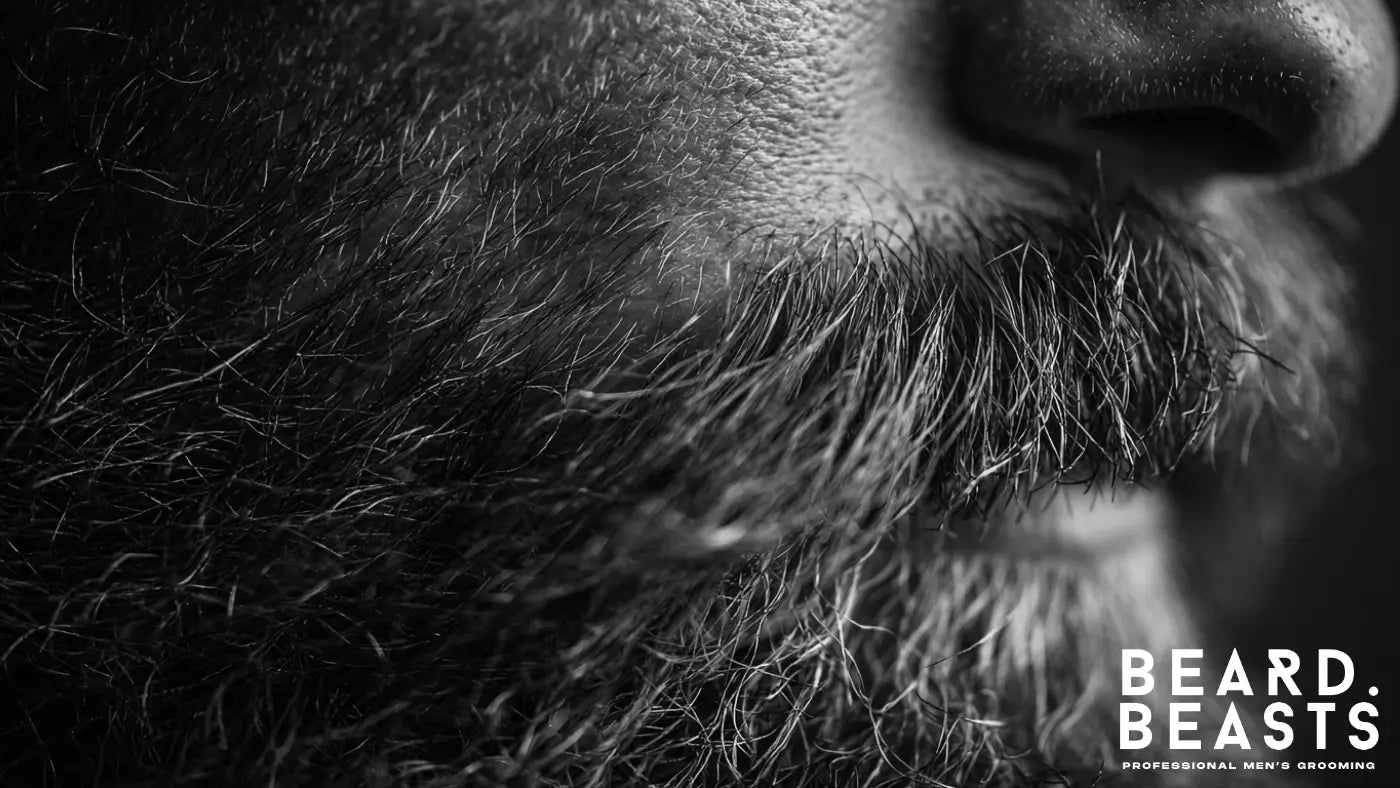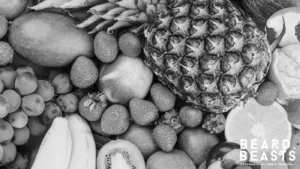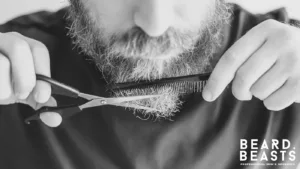A coarse beard is more than a texture — it’s a statement of strength. Defined by thick, dense strands and a naturally rugged feel, it commands attention but requires proper maintenance.
For many men, mastering a coarse beard isn’t about softening its power, but about shaping it with control and purpose.
Understanding your beard type is the first step toward maintaining it properly. Coarse beard hair behaves differently than finer types, holding more structure but less flexibility.
Without the right approach, it can feel rough, dry, or resistant to styling. With the right strategy, it becomes your most defining feature — bold, disciplined, and unmistakably masculine.
In this guide, you’ll learn what a coarse beard truly is, how to identify and manage it, and the grooming techniques that keep it looking strong and refined every day.
The Science Behind Coarse Beard Hair
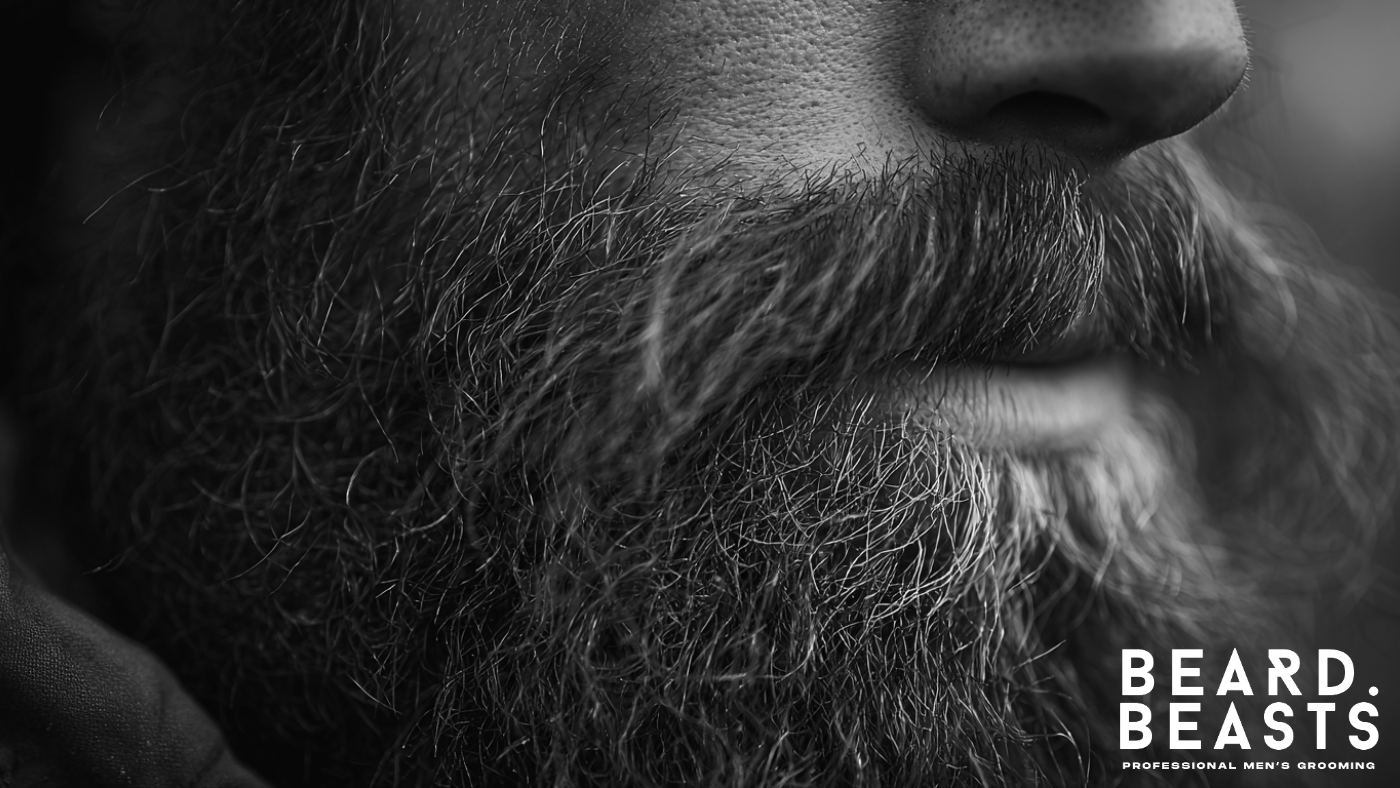
A coarse beard is defined by its structure — thick strands, firm texture, and a natural resistance to movement. The width of each hair shaft is greater than that of fine or medium hair, giving it a dense, robust appearance.
This structure contributes to the beard’s strength but also affects how it behaves during growth and grooming.
The texture of coarse beard hair comes down to biology. Testosterone levels, genetics, and follicle shape all play a role in determining hair thickness and curl pattern. Men with oval or irregular follicles typically grow hair that feels wiry or textured, while round follicles produce straighter strands.
Because coarse beard hair has a larger diameter, it absorbs less natural oil, which can lead to dryness if not properly maintained.
In short, a beard with thicker strands isn’t a flaw — it’s a natural expression of strength and density. Understanding its structure is the foundation of learning how to manage it effectively.
How to Know If You Have a Coarse Beard
Recognizing this beard type begins with texture and touch. When you run your fingers through your beard, coarse hair feels thick, firm, and slightly rigid. It tends to hold its shape, resisting the easy movement you’d notice in softer beard types.
This density is what gives it, its strong, full appearance — but it also makes it more demanding to manage.
You can confirm a coarse texture through a simple self-check.
- First, pinch a strand between your fingertips — if it feels sturdy or wiry, it’s likely coarse.
- Second, comb through your beard slowly. If your comb meets resistance or snags easily, your beard hair has a larger diameter.
- Third, pay attention after washing — coarse beard hair often dries faster than finer hair because the individual strands don’t hold as much water.
These signs together indicate you’re dealing with a beard that’s built for strength but demands consistent care. Understanding this difference helps you tailor your routine correctly.
Coarse beards need more hydration, protection, and patience to maintain their shape and comfort — and knowing your texture is the first step toward mastering your grooming strategy.
Common Coarse Beard Challenges
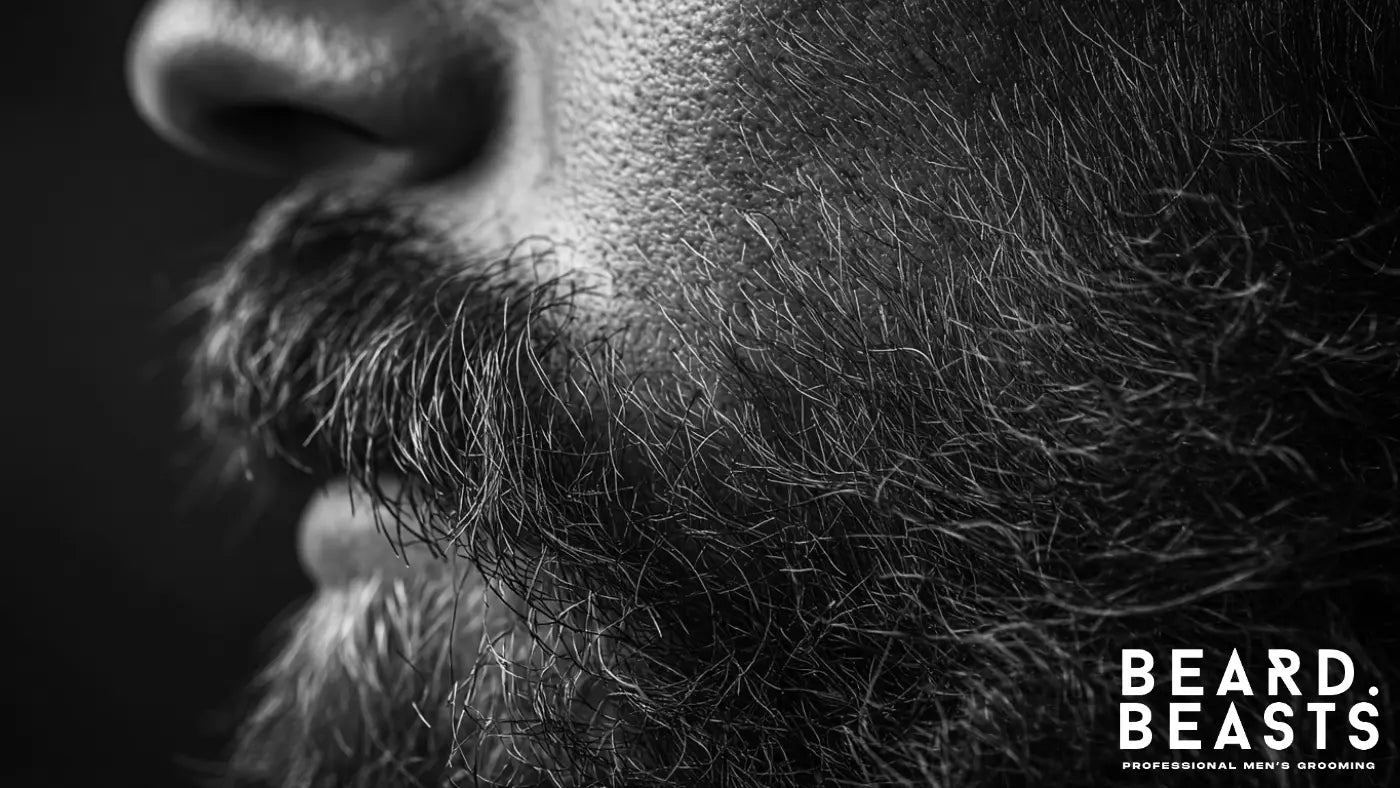
This beard type is naturally strong, but that strength comes with unique challenges. Its thicker strands make it less flexible, which can lead to dryness, stiffness, and discomfort if neglected.
Many men notice their coarse beard feels rough after washing or becomes tangled when combing — both signs that the hair isn’t receiving enough moisture.
Because coarse beard hair is dense, it can also trap sweat, dirt, and dead skin near the follicles. This buildup can cause irritation or beard itch, especially if the skin beneath isn’t properly hydrated.
Beard split ends are another common issue, as thicker hair fibers tend to fray when brushed aggressively or exposed to harsh weather.
Fortunately, every one of these problems can be managed with the right grooming strategy. Once you understand that coarse hair simply needs more nourishment and patience, maintaining a smooth, strong beard becomes straightforward.
How to Groom and Maintain a Coarse Beard
A coarse beard demands consistency and precision. The goal isn’t to fight your texture but to condition and control it through a disciplined routine.
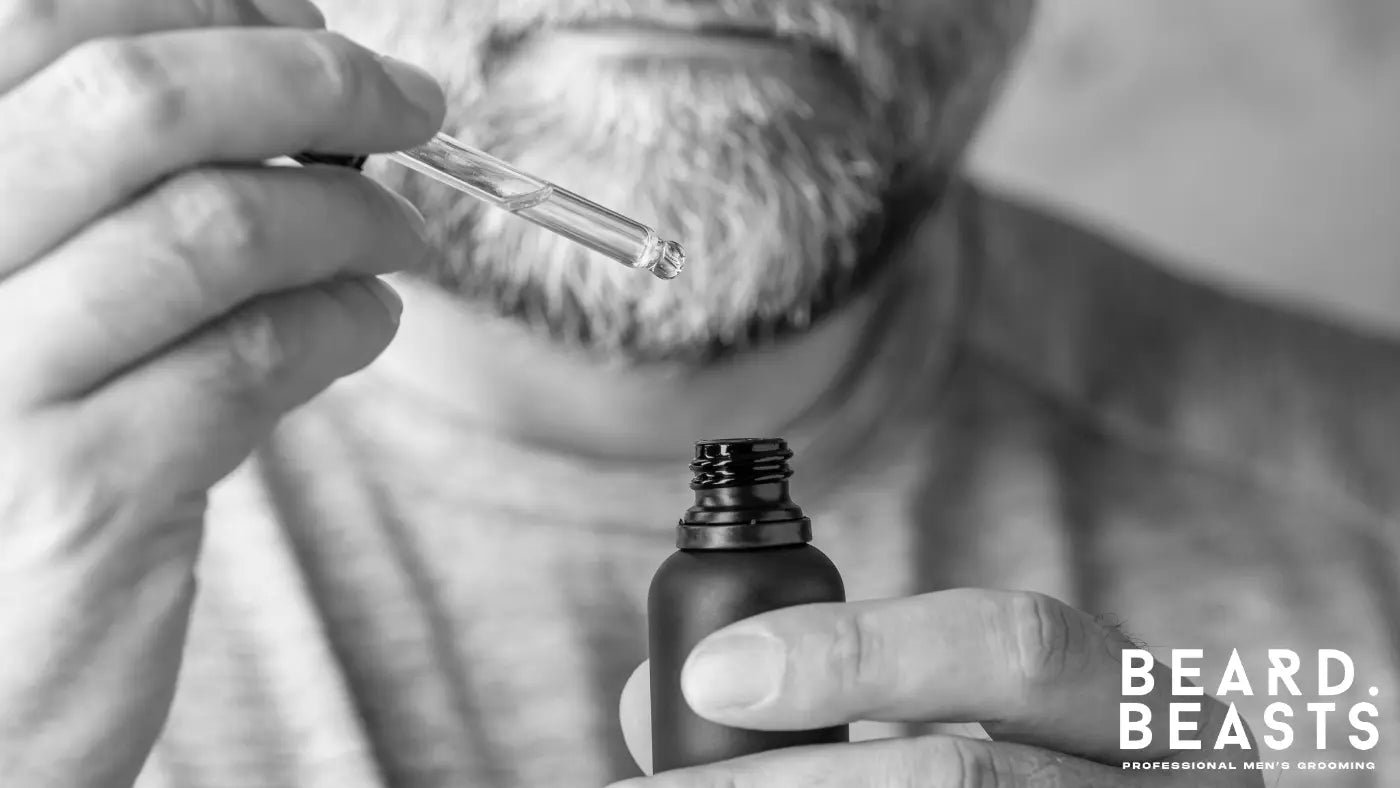
Step-by-Step Grooming Routine
To manage this beard effectively, focus on building a daily system that hydrates, protects, and shapes without stripping its natural strength.
Cleanse Properly: Coarse beard hair requires a wash that cleans without stripping. Use a beard-specific cleanser formulated to maintain natural oils. Regular shampoos dry out thick strands, leaving them brittle and rough. A balanced beard wash clears buildup while preserving essential moisture at the roots.
Condition Deeply: After cleansing, restore flexibility with a beard conditioner or nutrient-rich beard oil. Coarse hair fibers are dense and need targeted hydration to stay manageable. Massage the product into the beard and skin beneath to strengthen follicles and reduce stiffness over time.
Lock in Moisture: Hydration must be sealed to last. Once your beard is slightly damp, apply a beard butter to trap moisture and add structure. These richer products help shape the beard while keeping coarse hair soft and resilient throughout the day.
Comb with Care: Coarse hair resists movement, so detangling must be methodical. Use a wide-tooth comb or boar bristle brush, starting from the ends and working upward. This prevents breakage, stimulates circulation, and evenly distributes natural oils across your beard.
Trim with Precision: Trimming a coarse beard is about refinement, not reduction. Maintain its natural density and remove only damaged or uneven ends. Use sharp, professional tools and follow your natural growth pattern to preserve shape and fullness.
When followed consistently, this grooming routine transforms a coarse beard from wiry to controlled — without sacrificing its natural strength. The key is patience, repetition, and respect for your beard’s unique texture.
Once your grooming routine is in place, the next step is choosing the right products to support it. Thick beard hair responds best to quality ingredients and balanced formulations — not just frequent maintenance.
Best Products for Coarse Beards
A coarse beard performs best when supported by products that match its structure. Because thick strands retain less natural oil, they require formulations that soften, hydrate, and protect without weighing the hair down.
The right products won’t just improve comfort — they’ll enhance the beard’s natural strength and appearance.
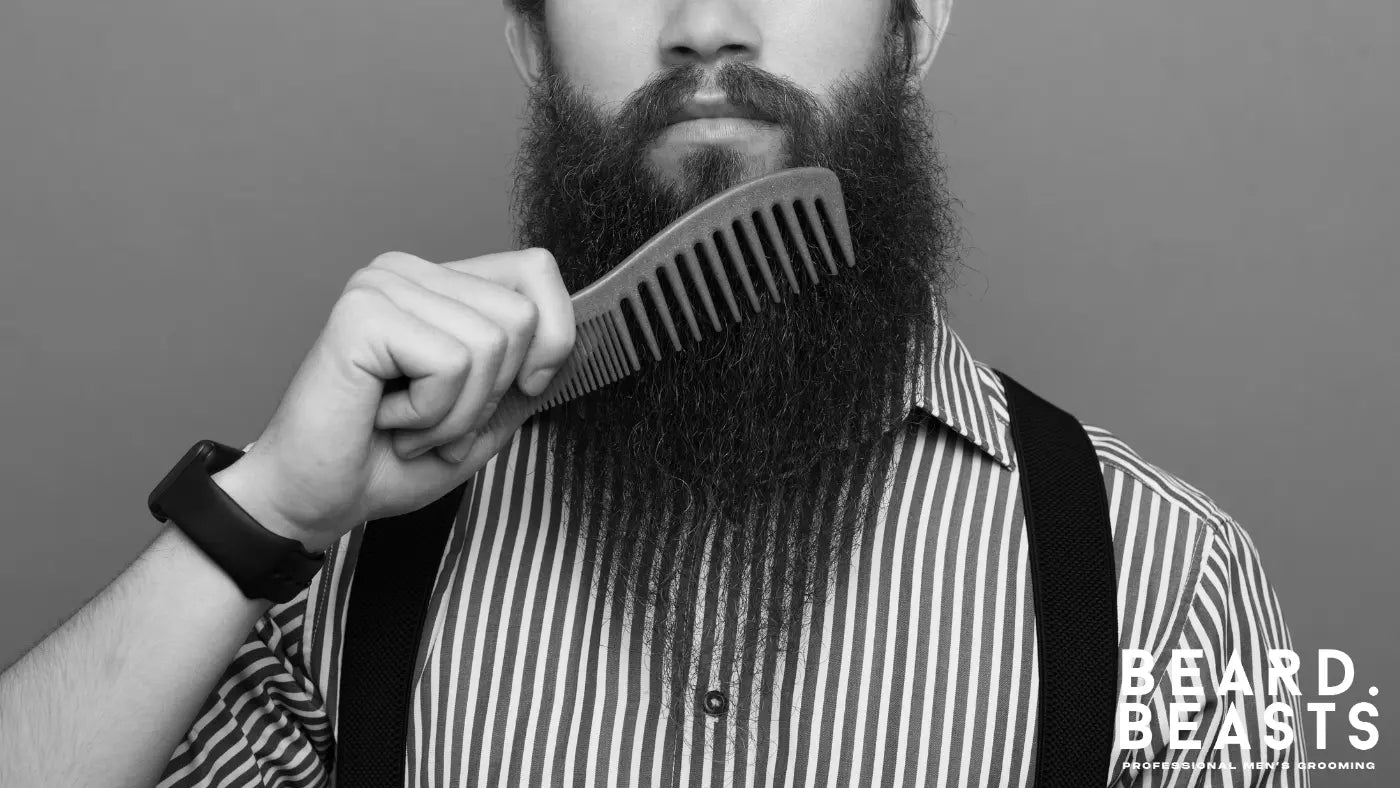
Essential Grooming Products
Each product in your routine serves a purpose. Together, they create the foundation for a beard that looks strong, feels manageable, and stays healthy over time.
Beard Oil: A cornerstone of beard care. Choose a beard oil rich in natural oils like jojoba, argan, or sweet almond — all known for their ability to penetrate thick hair shafts and restore flexibility. Apply daily after washing or before bed to maintain hydration and reduce stiffness.
Beard Balm: Ideal for shaping and control. Balms provide light hold while sealing in moisture, preventing dryness and frizz. Look for a formula with natural butters and beeswax to condition without creating a greasy feel.
Beard Butter: Designed for deeper nourishment. Beard Butter melts into thick facial hair, delivering long-lasting softness and hydration. Use them when your beard feels particularly rough or after exposure to cold, dry air.
Beard Conditioner: A specialized conditioner keeps dense hair supple and prevents tangling. Incorporate it a few times per week — especially after using beard wash — to maintain smoothness and reduce friction while combing.
Beard Comb or Brush: Tools matter as much as products. A wide-tooth comb prevents pulling and breakage, while a beard brush distributes oils evenly through the beard. Both help maintain texture and train growth direction over time.
Consistency in using these essentials builds the foundation of a healthy beard. With quality ingredients and the right routine, even the most rugged texture becomes a mark of strength and discipline.
Styling Options That Work with Coarse Beards
Coarse beard hair naturally adds strength and dimension to most beard styles. Its density creates bold outlines and defined shapes that softer hair types struggle to achieve.
The key is choosing a style that works with your beard’s texture — not against it — so that grooming remains sustainable and results look intentional, not forced.

Beard Styles That Complement Coarse Hair
Each of these styles leverages the natural body and weight of thick, dense beard hair, giving you a powerful yet controlled appearance.
The Full Beard: A timeless choice that highlights thickness and masculine structure. It requires regular trimming around the cheeks and neckline but thrives on the natural fullness coarse hair provides.
The Verdi: Combines volume with refined edges. Coarse hair gives this style a distinguished shape, especially when paired with a styled mustache. It suits men who want balance between rugged strength and professional precision.
The Garibaldi: Broad and rounded, this style uses your beard’s density as a visual advantage. The garibaldi beard is perfect for men who prefer a bold, relaxed look that still appears deliberate when maintained properly.
The Ducktail: Tapered at the chin, the ducktail beard works particularly well with coarse hair due to its strong lines and defined structure. It blends rugged texture with a refined look, creating a look that feels powerful but controlled.
Thick, textured beards carry visual weight, so the goal with styling is to enhance shape without overwhelming your features. Whether you prefer a classic full beard or a structured taper, discipline in grooming is what turns raw texture into a statement of strength.
How to Soften a Coarse Beard Naturally
Thick beard hair will always retain its natural strength and texture — but with consistent care, you can refine it and achieve noticeable softness. The goal isn’t to change your beard type, but to make it feel smoother, more flexible, and easier to maintain.
Start by focusing on hydration from both inside and out. Drink plenty of water throughout the day, and use hydrating beard products consistently. A well-moisturized beard is far less likely to feel rough or wiry.
Weekly conditioning treatments also help. Apply a generous layer of beard oil or butter, then cover your beard with a warm towel for several minutes. The heat opens the hair cuticle, allowing oils to penetrate deeper and restore softness.
Finally, avoid over-washing or using harsh cleansers. Coarse hair already struggles to retain natural oils, so washing too frequently can increase dryness. Stick to two or three washes per week, followed by conditioning and a protective balm.
Softness isn’t achieved through shortcuts — it’s built through consistent hydration, protection, and patience. Over time, this approach turns rough texture into controlled strength.
Final Thoughts: Strength Comes with Strategy
A coarse beard represents character — strong, textured, and distinct. But strength alone isn’t enough. The difference between a rugged beard and a refined one lies in how it’s cared for. With the right grooming routine, consistent maintenance, and quality products, even the thickest beard becomes a mark of discipline and precision.
Mastering this beard type isn’t about control; it’s about understanding. When you work with your natural texture rather than against it, your beard becomes an extension of who you are — bold, confident, and unmistakably masculine.
At Beard Beasts, we believe every beard tells a story of strength earned through care and consistency. Treat your coarse beard with purpose, and it will reward you with the presence and power that define true grooming mastery.

